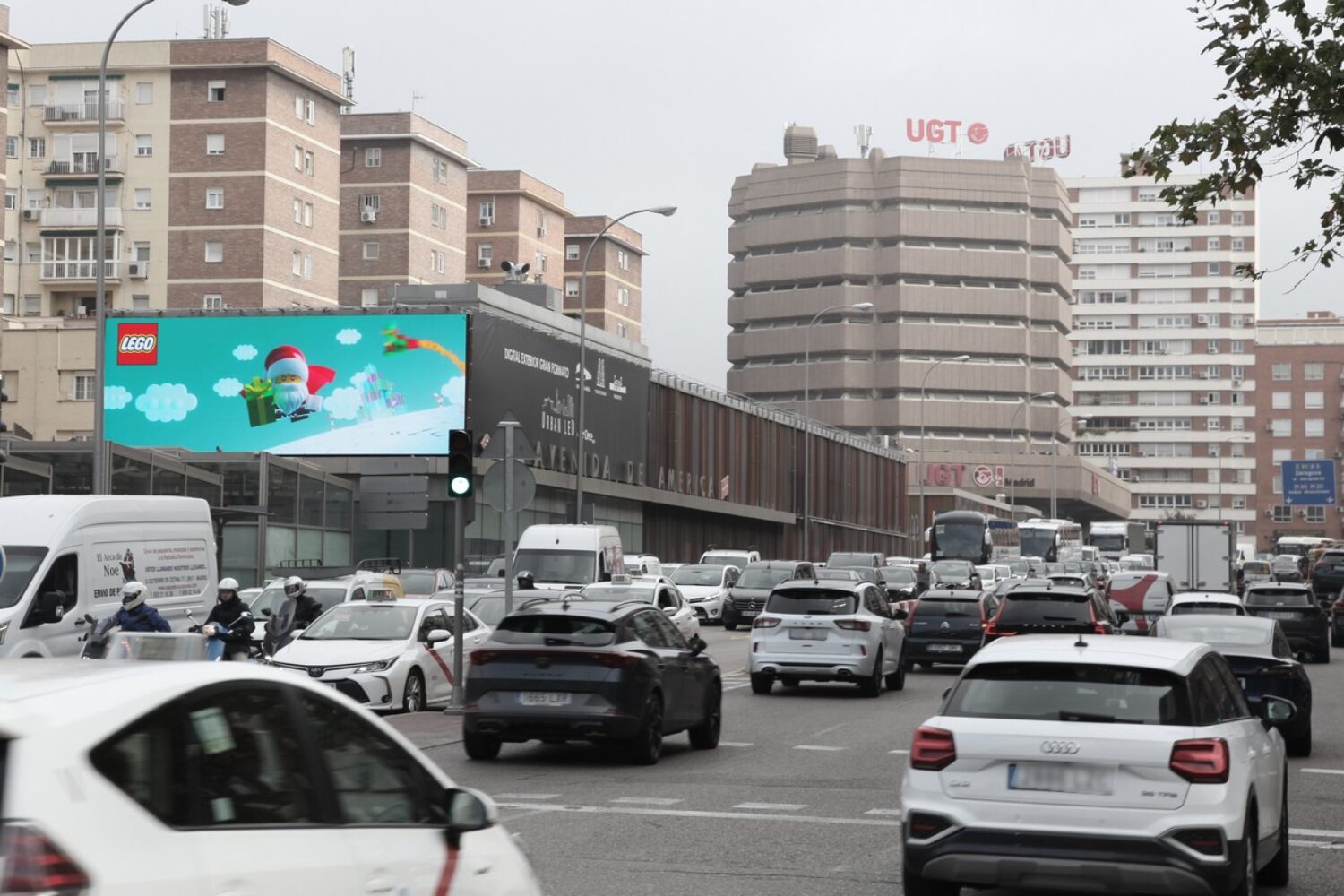Programmatic Advertising and Digital Out-of-Home (DOOH) are emerging as two fundamental pillars in contemporary marketing strategies, revolutionizing how brands connect with their audience beyond the traditional digital environment.
WHAT IS PROGRAMMATIC ADVERTISING?
Programmatic advertising automates the process of buying and selling online ad spaces. It harnesses algorithms and data to precisely target to specific audiencea and times in real-time. This highly efficient approach allows brands to effectively reach their target audience, maximizing the return on their advertising investment.
WHAT IS THE RELATIONSHIP BETWEEN PROGRAMMATIC AND DOOH?
DOOH (Digital Out Of Home) has revolutionized outdoor advertising by bringing it into the digital realm. Instead of relying on static billboards, DOOH utilizes digital screens located in strategically high-traffic areas, such as transportation interchanges and public transit stations. These screens offer unprecedented flexibility in creating and distributing advertising content, allowing brands to quickly adapt to different audiences based on time of day, location, and trends.
The inventory of digital outdoor advertising media, comprised of digital kiosks, large-format LED screens, and digital columns, among others, is available on platforms designed for automated advertising buying. This is where the concept of pDOOH (programmatic DOOH), also written as prDOOH, comes into play.
HOW TO BUY ADS ON PROGRAMMATIC PLATFORMS?
Platforms like Hivestack and Vistar Media allow agencies and brands to place their ads on a broad inventory of DOOH media. These are known as Demand-Side Platforms (DSPs), where advertisers can find all screens, previously uploaded by publishers through Supply-Side Platforms (SSPs).
In the case of Clece OOH, the exclusive provider of outdoor advertising spaces in transportation interchanges in Madrid, a wide-ranging inventory is available to users of these platforms.
Their achievement lies in distributing screens aimed at maximum visibility, operating from 6:00 to 23:59 on kiosks and from 7:00 to 23:59 on large formats, allowing advertisers to display their messages at the most appropriate location and time to reach their audiences.
- 120 digital kiosks measuring 120 x 175 cm.
- 4 screens measuring 300 x 200 cm.
- 1 outdoor LED screen covering an area of 50 m2 on the facade of the Avenida de América interchange (Urban Led circuit).
- 8 screens forming 2 360º digital columns with 4 LED screens each, totaling 55 m2, on the terrace of the Plaza de Castilla interchange entrance.
- 1 angled digital screen, covering an area of 60 m2, on the facade of the Príncipe Pío interchange entrance.
The selection of each specific media outlet is done via algorithms based on the advertiser’s budget, demographic segmentation of the audience, screen visibility (premium locations), context, relevance to the audience, and availability of data and analytical tools, among other factors.
Thus, a marketing agency specializing in concerts, theatrical shows, and festivals may find it particularly valuable to display their campaigns on kiosks and screens at Príncipe Pío, near the Gran Teatro Caixabank, the shopping center, and Madrid Río. Specifically targeting the leisure and entertainment time slots during weekends.
And a marketing department of a food brand, with a limited budget, may decide to choose advertising outlets that provide precise, real-time data on traffic and audience demographics, as Clece OOH does. This way, they can justify to management that they are optimizing their investment by showing their campaign to the audience most aligned with their objectives.
WHAT ADVANTAGES DOES pDOOH BRING TO ADVERTISERS?
The integration of programmatic and DOOH advertising combines audience segmentation and efficiency of the former with the visual impact and brand recall of the latter.
Some of its most significant benefits include:
- Highly specific audience segmentation, ensuring that campaigns are shown to the right people at the right time. For example, local restaurant ads during lunch hours, in Metro exits, and near bus stations.
- Real-time optimization, automatically adjusting supply and demand strategies to maximize campaign performance. Thus, an agency with a limited budget can justify to its client that it has shown their campaign in high-impact locations, but at a lower price than usual.
- Immediate adaptation of advertising messages, based on performance or significant events. Shortly after a sports success, team sponsors can capitalize on the celebratory moment by displaying congratulatory messages, thus strengthening the brand’s association with positive values, excitement, and euphoria.
- Elevation of the small screen experience to the big screen. Unlike the saturation and annoyance produced by mobile advertising, kiosks and screens in real environments are well-received. This is because they reach a mobile audience in an urban landscape, creating a less intrusive and more effective experience in which viewers are more receptive. Similar digital content, but on a larger screen with greater brand recall.
- Wider reach: By combining outdoor advertising with the effectiveness of programmatic buying, brands can comfortably reach broader and more diverse audiences. They thus surpass the limitations of traditional channels, such as advertising on social networks, Google, or TV, and do so from the simplicity of the DSP platforms’ control panel.
- Detailed and real-time measurement. It allows advertisers to know the performance of their campaigns at every moment of the day and specific location and make adjustments accordingly. In the advertising locations of the Madrid interchanges, Clece OOH uses Appcelerate technology, which provides real-time access to precise data, from nearby mobile devices to each advertising medium, complying with the General Data Protection Regulation.
WHAT DO YOU NEED TO KNOW TO GET STARTED IN THE WORLD OF PROGRAMMATIC DOOH?
As technology advances, the future of digital outdoor advertising looks increasingly promising. Programmatic buying in DOOH is expected to continue growing in popularity and sophistication.
Any marketing team should explore its possibilities to stay up-to-date and ensure a strategic positioning against its competitors.
Some common questions include:
- What are the technical requirements for ads intended for DOOH? DSP platforms specify them for each advertising medium. In the case of Clece OOH, with large-format digital screens, any questions can be resolved through their website contact.
- What terminology is essential to know? Programmatic buying has its own expressions that help stakeholders in the sector understand each other without confusion. Some of these terms include RTB (Real Time Bidding), Ad Exchangers or Marketplaces, DSPs or demand-side RTB aggregators, SSPs or supply-side RTB aggregators, and DMPs (Data Management Platforms). Their meanings can be consulted at this link.
- How to analyze the results? Primarily with realistic data, offered by sensors that capture foot traffic in front of the screens. This is the measurement system offered by Clece OOH.
- What are the best practices for creating effective campaigns in DOOH programmatic? It’s important to consider factors such as screen location, ad duration and content, as well as precise audience segmentation. Additionally, campaign results should be regularly monitored and analyzed to optimize performance.




